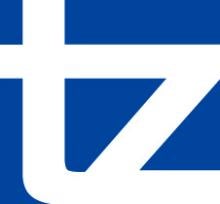Introduction
A company you work for, or maybe a competing company, is committing customs fraud. The company is lying about the value of the products it is importing, using improper HTS codes to avoid duties, or importing products that have been transshipped to evade tariffs. What can you do about it? One option is to file what is known as a “qui tam” lawsuit under the federal False Claims Act. A qui tam lawsuit is one that is brought by a private citizen or company against defendant that owe money to the government. When a qui tam lawsuit is successful, the party that initiated the case—called a “relator”—is entitled to a substantial monetary reward, ranging between 15% and 30% of the amount recovered for the government. A qui tam lawsuit has another major advantage: it engages the U.S. Department of Justice (“DOJ”) in the case, and typically results in the opening of an investigation by DOJ into the allegations made in the case. So, a qui tam lawsuit is a means of bringing allegations of customs fraud to the attention of the government, and triggering a serious inquiry by the government into those allegations.
False Claims Act qui tam cases can be complicated, and many factors go into whether such a case can be successful. In this article, we do not address the substance of the cases themselves. Instead, we address a question we are commonly asked by individuals or companies that are considering whether to go down the False Claims Act path. That question: “can a qui tam case be filed anonymously?” A relator may prefer anonymity for various reasons, but the primary concern is usually retaliation by an employer or from others in the relevant industry.
The short answer to the question is “sort of.” As will be explained below, when a relator files a qui tam case, the relator’s identity will, in all likelihood, remain confidential for a long time (often for several years). Usually, the guarantee of confidentiality for several years is enough to assuage the potential relator’s concerns. However, if the potential relator truly wants absolute, permanent anonymity, then this cannot be guaranteed. If the potential relator wants permanent anonymity, then an alternative route for reporting customs fraud to the government—the filing of a so-called “e-Allegation” with Customs & Border Protection (“CBP”)—may be preferable; we discuss that option later in this article.
Temporary Anonymity Provided By The “Under Seal” Requirement
The procedures for qui tam cases brought under the False Claims Act offer a fairly long period of anonymity. Normally, when a new civil lawsuit is filed in court, the plaintiff must serve the complaint on the defendant soon after filing. This is to give the defendant notice of the lawsuit, and an opportunity to prepare its defense. The False Claims Act, however, has the opposite rule; the relator is forbidden from serving the complaint on the defendant, and is required to keep the complaint secret from everyone except the government (specifically, DOJ). The statute provides that “the complaint shall be filed in camera, shall remain under seal for at least 60 days, and shall not be served on the defendant until the court so orders.” 31 U.S.C. § 3730(b)(2). When a complaint is filed “under seal”—as all new qui tam complaints must be pursuant to this provision—it is kept by the court in a filing system separate from the court’s other cases and is not available to the public. Indeed, the court will not even acknowledge the existence of the lawsuit, and if someone were to search for the lawsuit on the court’s publicly-available electronic docket (known as PACER), it would not appear. Thus, for as long as the case remains “under seal,” the defendant will not know that it has been sued, and the complaint will not be made publicly-available.
Pursuant to 31 U.S.C. § 3730(b)(2), the “under seal” period lasts at least 60 days. However, the statute also provides that “the Government may, for good cause shown, move the court for extensions of the time during which the complaint remains under seal.” 31 U.S.C. § 3730(b)(3). The purpose of the seal period is to give the government—acting through DOJ—an opportunity to investigate the relator’s allegations and make a decision about whether or not to intervene in the case. As a practical matter, the DOJ cannot do this within 60 days. So, as a matter of course, DOJ always immediately requests a 6-month extension of the seal period beyond the original 60 days, and the courts always grant such requests. This means that almost every qui tam case stays “under seal” for at least eight months after it is filed. Moreover, the vast majority of qui tam cases stay “under seal” for much longer because even eight months is not enough time for the government to finish its investigation, and DOJ will usually ask the court for multiple extensions of the seal. The average seal period for qui tam cases is approximately 18 months from date of filing. This average timespan includes obviously meritless cases that the Department of Justice disposes of quickly. Legitimate qui tam cases (meaning cases that have a valid legal and factual basis when filed) typically remain under seal for at least 2 years, and often for much longer than that, while the Government goes about its investigation and decision-making process.
During that seal period, the defendant may begin to suspect that it is facing some sort of investigation into its importing practices. This is because DOJ may approach the defendant directly with investigative requests for documents or other information, or the defendant may learn “through the grapevine” that former employees or other witnesses have been approached by government investigators. However, during that investigation, DOJ is itself bound by the “seal,” and therefore will neither reveal the complaint nor disclose the identity of the relator.
The upshot of these procedural requirements is that the complaint, and the relator’s identity, is protected during the seal period, and in legitimate qui tam cases it is safe to assume that this seal period will last at least two years and is likely to go even longer than that. This is a fairly long period of anonymity, and one that most relators conclude is enough to protect them from whatever form of retaliation is of concern to them.
Impact on Anonymity of Government’s Intervention Decision
Permanent anonymity, however, cannot be guaranteed. After DOJ finishes its investigation, but before the seal expires, the government is required to make a decision about whether or not to intervene in the case. See 31 U.S.C. § 3730(b)(4). If the government chooses not to intervene (sometimes referred to as a “declination”), then the relator decides whether to pursue to the litigation or voluntarily dismiss the case. If the relator decides to pursue the litigation, the complaint must be unsealed and served on the defendant, and the relator will no longer by anonymous. If the relator decides to voluntarily dismiss the case, the relator can request the court to keep the complaint permanently under seal. In most cases, the government will oppose that request, and the court usually will not grant it. This is because the purpose of the seal is not to protect the relator, but to protect the government’s investigation, and courts typically error on the side of making their proceedings public. However, in a small percentage of cases—usually where the relator is able to demonstrate a concrete, imminent harm that will result from unsealing—a court will grant the request to maintain the seal after the case is voluntarily dismissed, thereby permanently maintaining the relator’s anonymity.
If the government chooses to intervene—meaning that DOJ takes over the litigation—then the complaint will be unsealed, the lawsuit will be entered onto the court’s public docket, and the relator’s period of anonymity will end. In the vast majority of cases in which the government chooses to intervene, the defendant quickly settles. Accordingly, in those circumstances, the end of anonymity often coincides with the relator being paid the relator’s award for having brought the case. This is the ideal result for relators when qui tam cases are filed.
To summarize: the identity of a qui tam relator will likely remain anonymous for several years after the case is filed but is unlikely to remain anonymous indefinitely. Once the government’s investigation ends, and the government makes its intervention decision, in all but a few rare cases (where the relator voluntarily dismiss the case, and convinces the court that concrete, imminent harm will result from the unsealing) the seal will be lifted, and the period of anonymity ends.
Using A Special Purpose Corporate Entity to Mitigate Loss of Anonymity
Some whistleblowers will take one additional step to at least mitigate any repercussions from the lifting of the seal: they will file the qui tam case in the name of a new, specially created corporate entity. Note that in the discussion above, we have used the term “relator” to discuss anonymity, and recall that “relator” means the party that files the qui tam lawsuit. However, the “relator” is sometimes not the actual whistleblower (the person or company that learns of the fraud and discloses it to the government). Nothing in the False Claims Act necessarily requires that the actual whistleblower be the relator. Accordingly, whistleblowers sometimes will create a new corporate entity (usually a limited liability company or LLC) owned by the whistleblower, and then have that LLC act as the relator. When this is done, it is the LLC that is named as the relator in the complaint, and the actual whistleblower is not named anywhere in that document.
Filing in the name of an LLC provides a limited extra degree of anonymity. The underlying whistleblower’s name will not appear in the complaint, or in the case name listed in the court’s docket. Accordingly, if someone were to search for the whistleblower’s name in PACER, or to read the complaint, they would not learn the identity of the whistleblower. And depending on where and how the LLC was created, it is possible to keep the ultimate ownership of the LLC out of public view.
But that does not mean that the whistleblower will be truly anonymous. DOJ will often demand to know the identity of the whistleblower and will want to interview that person (or a representative of that company if the whistleblower is a company) as part of its investigation. If the case is unsealed and goes into active litigation, the defendant will learn the identity of the whistleblower through the normal discovery process. And if a settlement is reached, some actual human being will need to sign the settlement agreement on behalf of the LLC. Accordingly, although this can be an advisable step in some cases and for some whistleblower the added protection provided by filing a qui tam case with a specially created corporate entity acting as the relator is limited.
E-Allegations as An Anonymous Alternative to A Qui Tam Lawsuit
Filing a qui tam lawsuit is not the only way to alert authorities to customs fraud. CBP has an e-Allegations program that provides an electronic portal through which the trade community and the general public can report suspected trade violations. The program allows anyone to report suspected violations of trade laws or regulations related to the importation of goods into the U.S.
Notably, e-Allegation informants may choose to remain anonymous. However, the CBP encourages informants to identify themselves in case future contact is needed to obtain more detailed information, and we recommend having legal counsel file e-Allegations on your behalf, thereafter, counsel can communicate with CBP and discuss any potential questions CBP may have to further the investigation while keeping the informants anonymous.
If an informant chooses to provide their name, CBP endeavors to protect their identity and in most cases the Privacy Act, the Trade Secrets Act, and CBP regulations prevent CBP from disclosing such information. These laws and regulations also generally prevent disclosure of what enforcement actions, if any, were taken. CBP can disclose to the informant general information regarding their allegation such as whether the case is open or closed. Informants may file a Freedom of Information Act (FOIA) request to obtain additional information regarding their allegation.
Once incentive for informants to self-identify when reporting through the e-Allegation program is potential compensation following an investigation. As with a qui tam claim, informants may be entitled to compensation in the event of a recovery. Current law allows informant compensation of up to 25% of the net recovery to the government from duties withheld; from any fine (civil or criminal), forfeited bail bond, penalty, or forfeiture incurred; or, if the forfeiture is remitted, from the monetary penalty recovered for remission of the forfeiture [Per 19 U.S. Code § 1619 and 19 CFR 161.16]. The award amount may not exceed $250,000.
Jennifer Diaz, Diaz Trade Law, co-authored this article.




 />i
/>i

